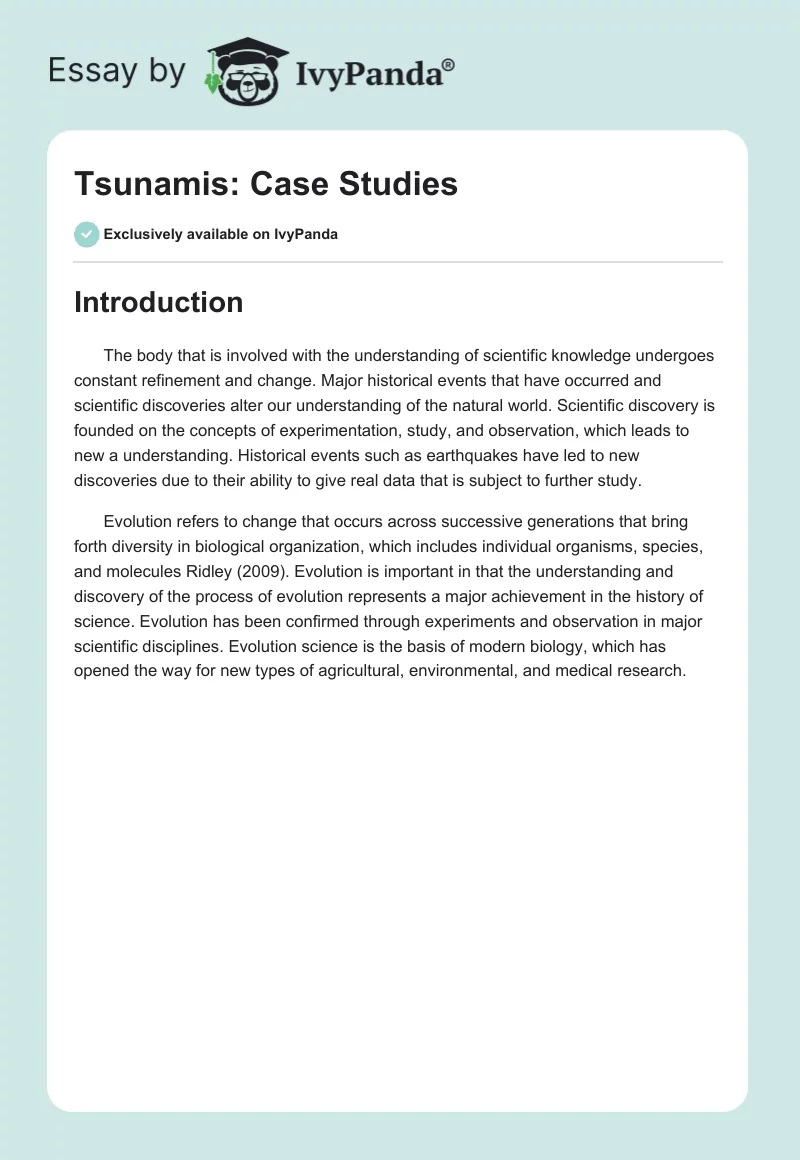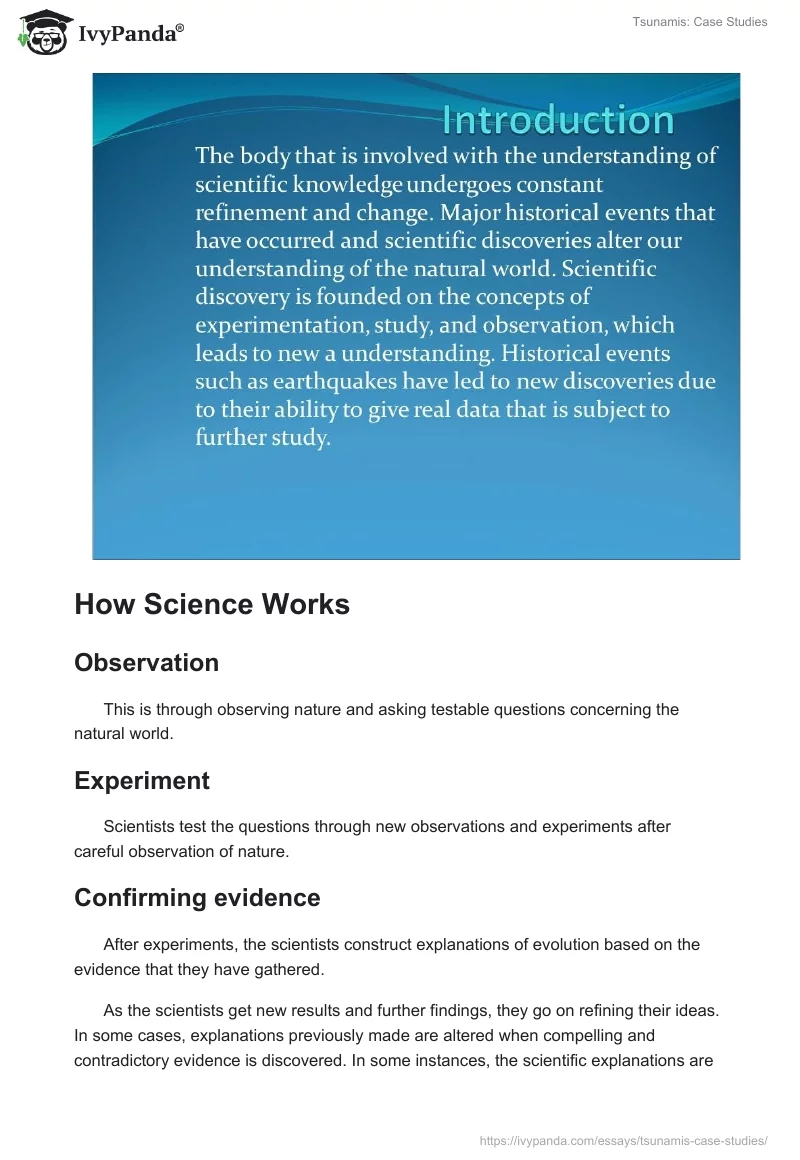Introduction
The body that is involved with the understanding of scientific knowledge undergoes constant refinement and change. Major historical events that have occurred and scientific discoveries alter our understanding of the natural world. Scientific discovery is founded on the concepts of experimentation, study, and observation, which leads to new a understanding. Historical events such as earthquakes have led to new discoveries due to their ability to give real data that is subject to further study.
Evolution refers to change that occurs across successive generations that bring forth diversity in biological organization, which includes individual organisms, species, and molecules Ridley (2009). Evolution is important in that the understanding and discovery of the process of evolution represents a major achievement in the history of science. Evolution has been confirmed through experiments and observation in major scientific disciplines. Evolution science is the basis of modern biology, which has opened the way for new types of agricultural, environmental, and medical research.
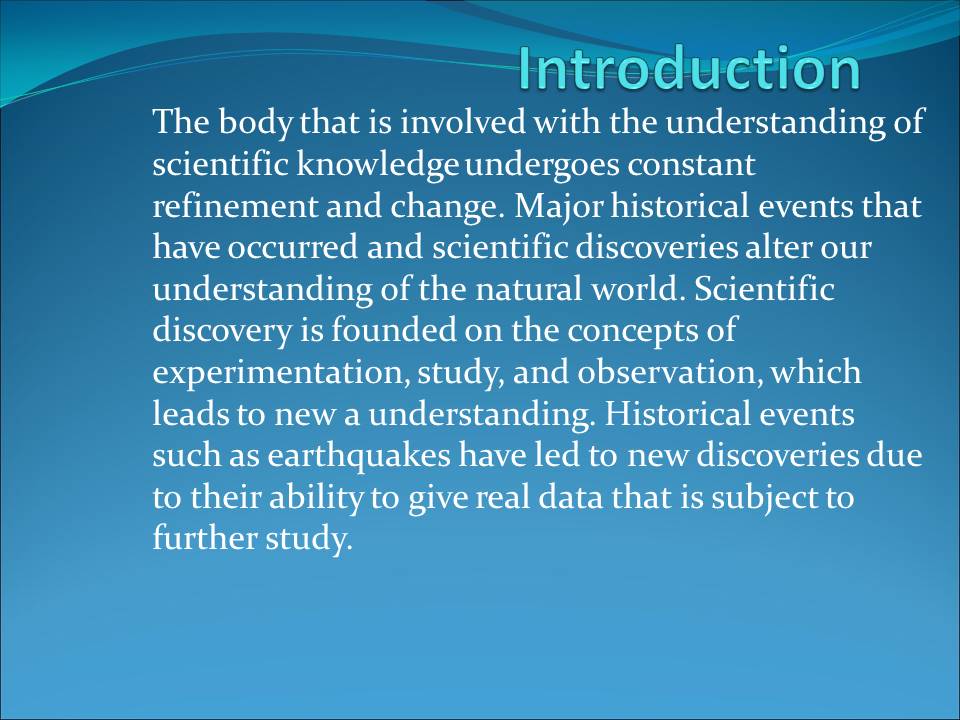
How Science Works
Observation
This is through observing nature and asking testable questions concerning the natural world.
Experiment
Scientists test the questions through new observations and experiments after careful observation of nature.
Confirming evidence
After experiments, the scientists construct explanations of evolution based on the evidence that they have gathered.
As the scientists get new results and further findings, they go on refining their ideas. In some cases, explanations previously made are altered when compelling and contradictory evidence is discovered. In some instances, the scientific explanations are well established such that no further evidence can alter them. In this case, the explanations are referred to as a scientific theory, which is a comprehensive explanation of a feature of nature that is supported by facts that have been gathered overtime. Therefore, evolution is anchored on the pillars of observation, confirmation of evidence and experiments Hans (2001).
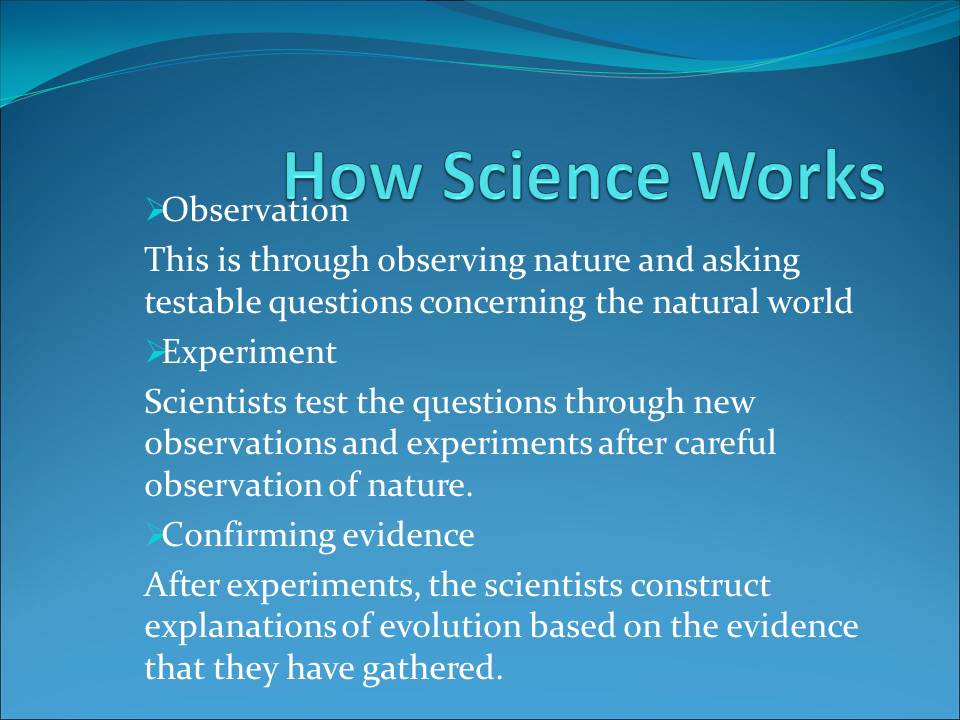
Theories of evolution
Darwin’s theory
It is the widely known theory that states that life descended from a common ancestor.
Biblical theory
According to this theory, evolution is the work of God. Evolution is documented in the bible in the book of Genesis. The six days of evolution are documented by the bible.
Spontaneous generation theory
According to this theory, living things evolve from non living matte.
Darwin theory
Darwin’s theory assumes the emergence of living things from non-life and the theory stresses a purely naturalistic and undirected mode of evolution. This means that complex creatures evolve from simplistic ancestors naturally overtime. In essence, as genetic mutations occur within an organism, the beneficial mutations are maintained since they aid survival in a process of natural selection. The beneficial mutations are passed on from one generation to the next generations. Over a long period of time, the beneficial mutations are accumulated, and they result to an entirely different organism Delage (2009).
Biblical theory of evolution
This theory is well supported by the Christians and the Jews. The biblical theory argues that God created the world and all life in it. This is supported by the creation story in the book of Genesis. God formed the world and all life in it in six days 4.5 billion years ago. The theory argues that, God was God and he was there in the beginning and, therefore, he was able to tell us what happened. The theory has a chronological order of how life came into being, and it is as follows:
- Creation of all the physical universe, that is, energy, space, matter, time, planets, stars.
- Transformation of the atmosphere from opaque to translucent
- Formation of the water bodies.
- Establishment of oceans and continents.
- Production of plants on the continent.
- Transformation of the earth atmosphere from translucent to transparent (stars, sun, moon).
- Creation of sea animals and sea mammals.
- Creation of birds of the air.
- Creation of land mammals.
- Lastly the creation of mankind Ridley (2009).
Spontaneous generation theory
According to this theory, life emerges spontaneously from matter. The theory argues that, mice and snakes emerged spontaneously from dust pits. The theory was believed since it seemed to explain the occurrence of maggots on decaying meat. By the 18th century, it was obvious that bigger organisms were not produced from nonliving matter. The origin of microorganisms was determined by Louis Pasteur in the 19th century who proved that microorganisms such as bacteria actually reproduce, and they do not occur spontaneously.

Scientific discoveries
Fossil Record
Supported by findings of fossils in layers of rocks. Fossils similar to today’s forms of life are found in rock layers. The evidence obtained here is of the bipedal dinosaurs and birds.
DNA Research
Genetics and molecular biology explain how evolution works.
Common ancestry
Many species have common behaviors and structures. A person rides a bicycle, a cow walks a bird flies and a whale swims.
Therefore, the fossil records, evidence that living things have a common ancestral origin and DNA Research and many other findings provide evidence that evolution by natural selection represents the way life on earth came into being.
The fossil record
Species change or evolve overtime through the process of natural selection. Scientists have found many fossils in layers of rocks of different ages that confirm that changes in life forms that are indicated by the theory of evolution.
DNA Research
Traits are usually passed from one generation to the other through DNA, which is a molecule that directs how cells reproduce and grow.
Common Ancestry
When fossils are compared to each other in terms of age and structure, it is clear that they share a common ancestral origin. As most of the findings have shown, most of the species existing today have their evolutionary line which can be traced back to a point where they share the same ancestor Delage (2009).

The tsunami in Indonesia
The Tsunami occurred in the Indian Ocean along the coast of Indonesia on 26.12.2004.
It is scientifically known as the Sumatra-Andaman earthquake.
It is said to be one of the deadliest earthquakes ever to hit the world.
It claimed the lives of more than 230,000 people in fourteen countries with Indonesia being the worst hit.
Massive movement of seabed caused the tsunami during the earthquake movement. The Burma plates slipped around the earthquake’s epicenter. The waves took 15-20 minutes to get to the Indonesian coast Satake (2005).
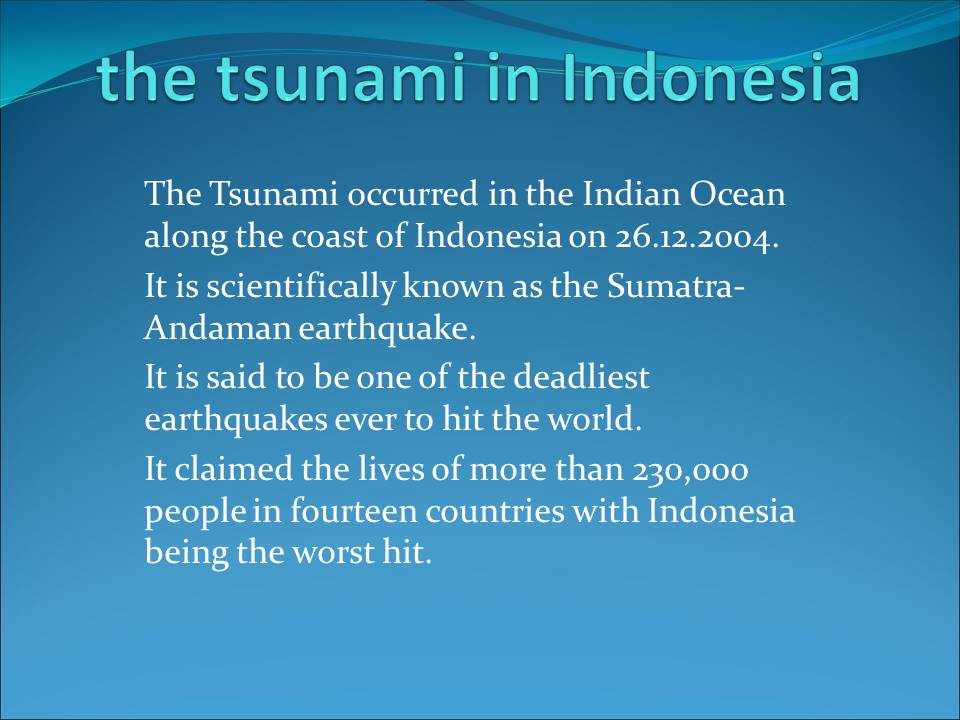
History of the tsunami in Indonesia
The area around where the earthquake occurred has a history of seismic waves.
There were giant forces that were built underneath for hundreds of years. The forces were released on December 26.
It was a 9.0 magnitude earthquake in the Ritcher Scale.
Violent movements of tectonic plates displaced a large amount of water which sent powerful shockwaves in all directions.
It resulted from sliding of parts of the earth‘s crust, a method that has been in process for ages. It was recorded as one of the deadliest in the Indian Ocean for the last 700 years. There were three other major earthquakes recorded in by scientists along this coast. The Indonesia earthquake was recorded as the third most powerful and deadliest since 1900. The other most deadly earthquakes are the Tangshan in China which took place in 1976, the 1927 earthquake in Xining, China, the Great Kanto earthquake in Tokyo and Gansu. The 2004 Indonesia tsunami is one of the deadliest earthquakes to be recorded by man after the earthquake in Pacific Ocean in 1782.
Massive movement of seabed caused the tsunami during the earthquake movement. The Burma plates slipped around the earthquake’s epicenter. The waves took 15-20 minutes to get to the Indonesian coast Ramasamy (2006).
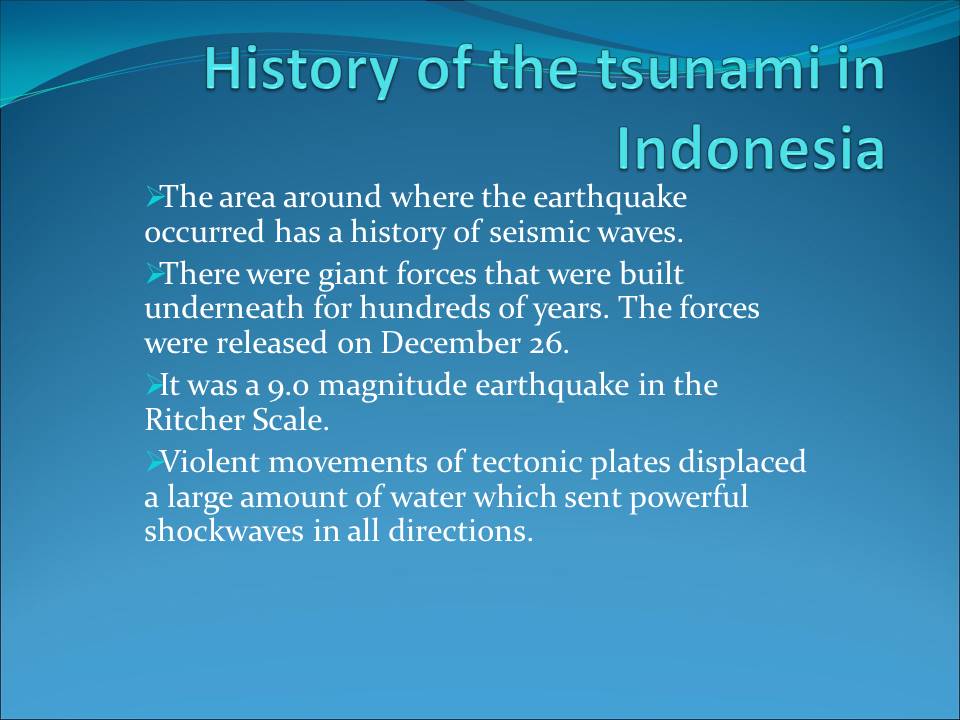
Social Impact
The tsunami led to:
- Economic:
- Fishing, which was a major economic activity, was hampered.
- Tourism, which is a main foreign exchange earner, was affected.
- It affected shipping along the coast.
- Loss of life and property.
- Destruction of infrastructure.
- Humanitarian:
- It led to chronic shortage of food and clean drinking water.
- It led to diseases like cholera and typhoid.
- Many countries donated foodstuffs and pledged to support Indonesia in the long term.
- Environmental impact:
- Damage to coral reefs, vegetation, mangrove forests plant and animal diversity.
- Water pollution, damage to sewer lines, spread of the solid waste and industrial chemicals.
Understanding of the natural world from the Tsunami of 2004
Geologists have not been able to understand the cause of earthquakes. However, after the tsunami of 2004 in Indonesia, there has been an increase in the use of technology to try to understand earthquakes. Geologists have identified that the earth’s crust comprises of plates that constantly move slowly, and vibrations occur which cause minor earthquakes. The natural world is made up of plates that move, when the plates move, they cause fractures in earth’s crust which later develop into earthquake. The fractures are called fault. Normal faults are vertical, and they occur where earth’s plates pull apart because of a divergent plate boundary nearby. Vertical faults occur when the earths crust is compressed when two plates collide. Geologists have understood that earthquakes occur when blocks are locked together because of the friction created when they move. When they attempt to move as they are locked, pressure builds until it has enough energy to push the rock and they move causing the earthquakes Satake (2005).
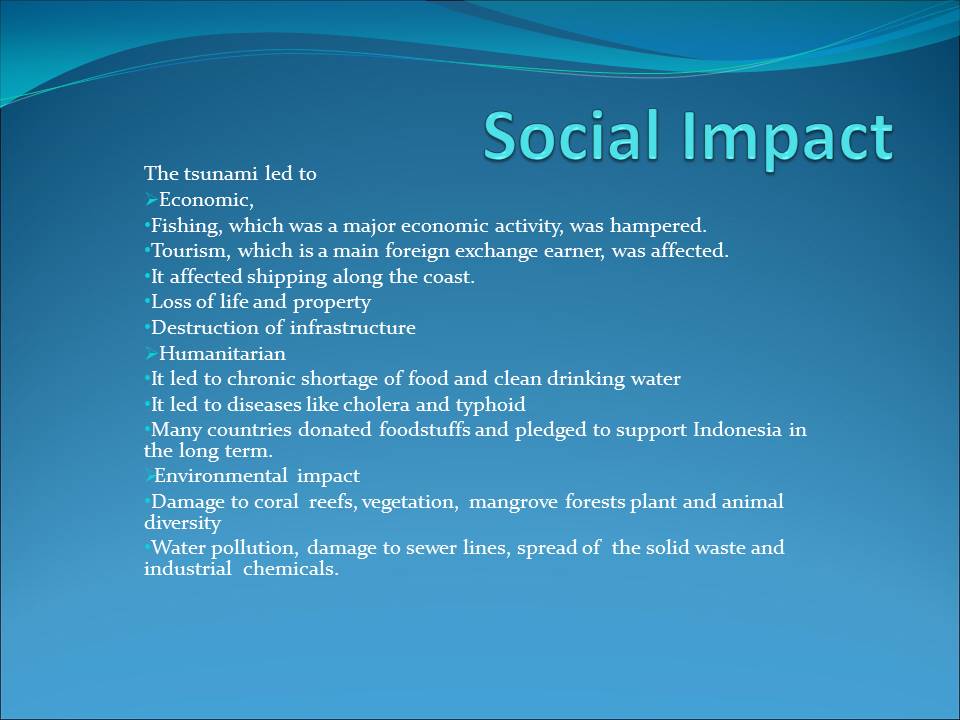
Understanding of the earthquakes
The tsunami led to detailed study of earthquakes by scientists all over the world in order to come up with measures to mitigate against the effects of earthquakes, countries have established disaster response units and installed earthquake detectors in strategic locations along the coasts.
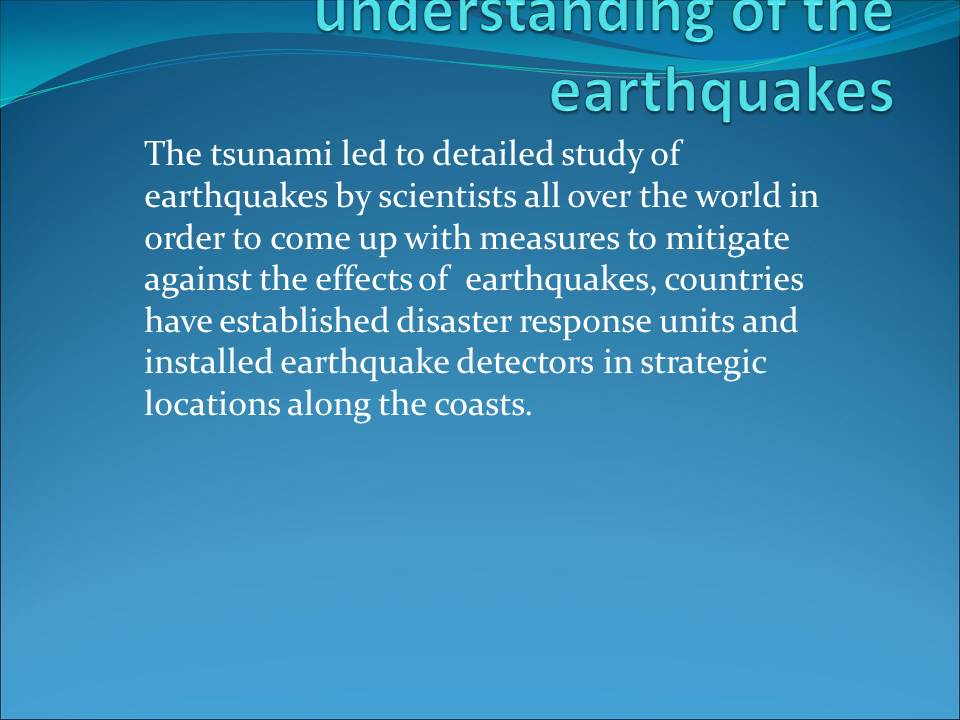
Conclusion
In conclusion, it can be seen that evolution as a process takes time, and it involves various stages. There has been several theories talking about evolution and scientists still research on the topic, whereas, historical events continue to be documented and we still get new information concerning a past phenomenon.
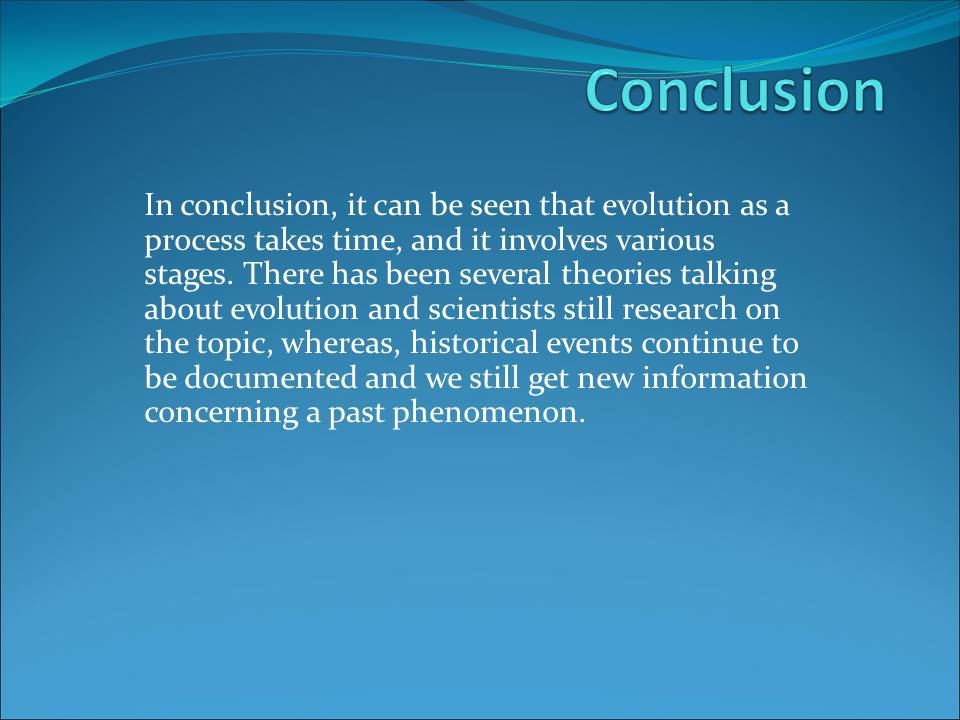
References
Delage, Y. (2009). The Theories of Evolution. Chicago: BiblioBazaar.
Hann, J. (2001). How Science Works. New York: Reader’s Digest.
Ramasamy, S. (2006). Geomatics in Tsunami. Mumbai: New India Publishing.
Ridley, M. (2009). Evolution. London: John Wiley & Sons.
Satake, K. (2005). Tsunamis: Case Studies and Recent Developments. New York: Springer.

